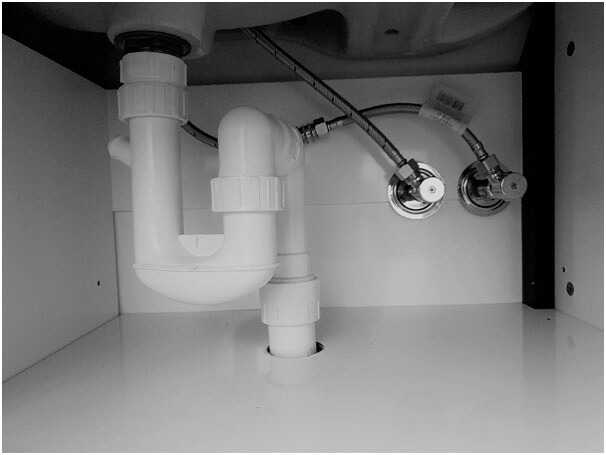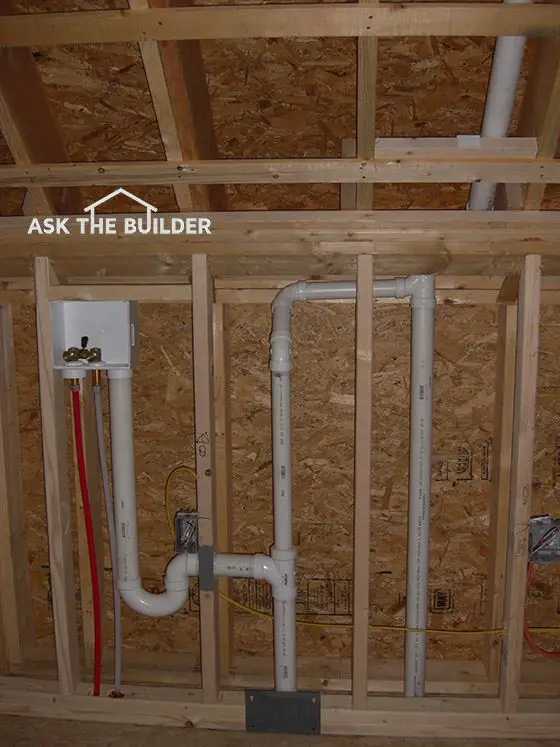Correct Ventilation in Plumbing Systems: What It Matters
Correct Ventilation in Plumbing Systems: What It Matters
Blog Article
What are your thoughts about Essential Plumbing Vent Pipes: Understanding Their Role?

Appropriate ventilation in plumbing systems is typically neglected, yet it is important for preserving the capability and safety of your home's pipes. Ventilation aids control atmospheric pressure, avoid the accumulation of unsafe gases, and guarantee the effective elimination of waste. In this overview, we will certainly explore the value of proper pipes ventilation, just how it works, and the advantages it gives your plumbing system.
Understanding Air Flow in Plumbing
Ventilation in plumbing refers to the network of pipes that permit air to move with the water drainage system. These vents offer several functions, consisting of managing atmospheric pressure within the pipelines, stopping sewer gases from getting in the home, and helping in the smooth flow of wastewater.
Just How Air Flow Works in Pipes Equipments
Atmospheric Pressure Policy
Correct air flow maintains well balanced atmospheric pressure within the pipes system. When water flows via pipes, it displaces air. Without appropriate ventilation, this variation can create negative stress, resulting in slow down drains pipes or siphoning of water from catches, which can trigger undesirable odors to leak right into the home.
Avoiding Sewage System Gas Accumulation
One of one of the most important features of plumbing vents is to avoid sewage system gases, such as methane and hydrogen sulfide, from gathering within the home. These gases can pose significant wellness risks and are highly flammable. Vent pipelines enable these gases to run away securely outside.
Assisting in Waste Elimination
Ventilation assists in the efficient removal of wastewater by protecting against airlocks in the drainage system. When air can flow easily through the vents, it allows water and waste to move smoothly via the pipelines, lowering the threat of blockages and backups.
Kinds Of Pipes Vents
Main Heap Vent
The primary pile air vent, additionally referred to as the air vent pile, is the primary vent in a pipes system. It prolongs from the major drainpipe line up via the roof, allowing gases to run away and fresh air to enter the system.
Branch Vent
Branch vents connect to the major stack vent and offer individual components, such as sinks, bathrooms, and showers. These vents guarantee that each component has adequate ventilation to operate appropriately.
Air Admission Shutoff (AAV).
An Air Admission Valve (AAV) is a one-way valve that allows air to enter the plumbing system without the requirement for a traditional vent pipe extending through the roofing. AAVs are generally used in remodellings or areas where setting up a typical air vent is not practical.
Indicators of Poor Air Flow in Pipes.
Slow Draining Fixtures.
If your sinks, tubs, or toilets are draining pipes gradually, maybe an indication of bad ventilation. Poor air circulation can develop a vacuum effect, making it hard for water to drain pipes appropriately.
Gurgling Sounds.
Gurgling audios originating from drains are commonly a result of air being drawn with water catches because of negative stress in the pipes. This is a clear indication of inadequate air flow.
Undesirable Odors.
Drain smells inside your home are a warning that your plumbing system is not correctly ventilated. This might indicate that sewage system gases are not being sufficiently vented outside, causing possibly dangerous conditions.
Typical Ventilation Mistakes.
Inadequate Vent Sizing.
Using small air vent pipelines can cause bad air flow and pressure discrepancies in the system. It's important to make use of vents that meet the details needs of your pipes system.
Improper Vent Positioning.
Placing vents too much from the components they offer can reduce their effectiveness. Proper positioning makes sure that air can flow openly and successfully through the system.
Disregarding Code Requirements.
Building ordinance supply particular standards for plumbing air flow. Ignoring these codes can lead to a system that falls short to function properly and may result in costly fixings or health hazards.
Benefits of Appropriate Ventilation.
Improved System Efficiency.
Appropriately aerated plumbing systems run more effectively, with less clogs, faster draining, and less pressure on the pipes. This effectiveness extends the life-span of the plumbing system.
Improved Air Quality.
By stopping sewer gases from entering your home, appropriate air flow adds to much better indoor air quality, making your living atmosphere healthier and a lot more comfortable.
Preventing Water Damages.
Appropriate ventilation aids protect against water from being siphoned out of traps, which can lead to sewage system gases entering the home and causing water damages over time.
Actions to Ensure Correct Air Flow.
Consulting Plumbing Codes.
Always speak with local pipes codes when creating or customizing your pipes system. These codes offer the required standards for appropriate venting and guarantee your system fulfills security standards.
Routine Evaluation and Upkeep.
Regular examinations can aid identify prospective ventilation problems before they end up being major troubles. Maintenance jobs, such as cleaning up air vent pipes and looking for blockages, are crucial for keeping the system in good working order.
Specialist Installation.
For new installments or significant modifications, it's a good idea to employ a specialist plumbing. They have the experience to make certain the air flow system is correctly designed and installed according to code.
Final thought.
Correct air flow is an essential part of any type of plumbing system, guaranteeing that it works effectively and safely. By understanding the importance of air flow, identifying the indications of bad ventilation, and taking steps to keep your system, you can protect against expensive issues and protect your home's air top quality.
4 Things You Should Know About Your Plumbing Vents
What Plumbing Vents Are
Also called a vent stack, a plumbing vent is a vertical pipe attached to your drain line that runs through your roof. The plumbing vent pipe, or plumbing air vent, removes gas and odors from your plumbing system and allows fresh air to enter the pipes, helping the water to flow out of the drain pipes.
What Plumbing Vents Do
Plumbing vents have two basic functions. One of which is to allow unpleasant smelling wastewater and sewer gasses to escape your plumbing system instead of entering your home. Plumbing vent pipes are typically located on roofs, away from windows, to ensure the fumes exit the home completely.
The other function of the plumbing vent is to move fresh air into your plumbing system. This helps move water through every plumbing fixture in your house, like toilets and sink drains. Think of the way in which you need to let a little air into the bottle as you pour soda in order to make the drink flow smoothly.
Different Types of Plumbing Vents
True vent: This is the most common vent option. In simplest terms, a true vent is a vertical pipe attached to your drain line that exits through the roof. They often function as the main vent that other fixtures can connect to. Re-vent pipe or auxiliary vent: Attached to the drain line near specific plumbing fixtures, re-vent pipes run up and over to connect to the main vent. Common vent: Two plumbing fixtures installed on opposite sides of a wall are typically tied into the vent stack using something known as a sanitary cross. Wet vent: This venting option operates as a drain pipe and a vent at the same time. Wet vent drainage systems drain water from one fixture while venting the air from another. Although they’ve been used for over 100 years, wet vent systems have only recently been added to the plumbing code in many areas. If you’re planning on installing one in a bathroom remodel, make sure you check your local code prior to construction. Loop vent: For free-standing fixtures like kitchen island sinks, loop vents are ideal. These vent pipes run under the floor, rise from the P-trap, and create a loop inside the cabinet sink. Air admittance valve: An AAV is a one-way mechanical valve typically installed at the site of the plumbing fixture. AAVs allow venting to occur without having to tie into a larger venting system. They’re ideal for venting fixtures where you aren’t able to easily connect to an existing vent system. Common Plumbing Vent Issues
Although vent pipes typically don’t have water flowing through them, they’re still subject to many typical plumbing issues. For example, clogs are one of the most common problems associated with sewer vent pipes. If your vent pipe gets clogged, all of your plumbing fixtures tied into the vent stack will be affected.
A sink with a slow drain that bubbles and gurgles or a strong sewage smell around your toilet are both indicators that your toilet vent pipe is clogged. Because most vent pipes exit through the roof, old leaves, twigs or even a bird’s nest could be clogging the pipe.
Clogs in your vent pipe system cause a buildup of negative pressure, meaning that water won’t be able to flow out of your home very well. It’s similar to putting your finger over the opening of a straw to trap water inside. When you remove your finger, the water is able to flow out of the straw.
If you suspect you have any blockage in your vent, make sure you have a professional come examine the situation. Left unchecked, a blocked air vent can lead to other costly repairs, like leaks and sediment buildup.
Under Pressure
Pipe vents are essential aspects of a home’s plumbing system. Owning a home means learning about all sorts of things you never put much thought into before. But by understanding as much as you can about the important systems of your home, you can keep those budgets intact and those anxiety levels low.
https://www.homeserve.com/en-us/blog/home-improvement/plumbing-vents/

As an enthusiastic reader on The Upsides of Proper Ventilation in Plumbing Design, I think sharing that information was worthwhile. Sharing is nice. You just don't know, you may be doing someone a favor. Thanks a lot for being here. Come back soon.
View Report this page